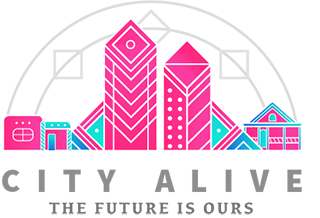The ABQ Equity Report is Here

Photo Credit: City Alive
What would we gain by increasing equity? $11 billion to be exact.
Here’s a sobering statistic: the Albuquerque metro economy would be nearly $11 billion stronger if we closed racial income gaps.
Last year the W.K. Kellogg Foundation in partnership with PolicyLink and the Program for Environmental and Regional Equity released Albuquerque's Equity Profile. The report calculated how much higher total economic output would have been in 2014 if all racial groups who earn less than Whites had earned similar incomes to their White counterparts. The report estimates that if the racial wage gap were closed, the average income for Native Americans would increase by over 90 percent (an increase of over $20,000 per year), and Latinos would see a 56 percent gain. The region’s economic growth in goods and services produced would be about 26 percent higher.
How do we stop losing out on billions a year?
The Equity Profile predicts Albuquerque could be one of the most prosperous cities of its size, so long as we focus on increasing racial equity and advancing opportunity for all. Albuquerque has made great strides in improving graduation rates for youth of color, increasing job growth and expanding the tech sector. But the racial income gap persists. Fixing inequity, the report says, is the lynchpin to unlocking our city’s true potential for growth.
Why equity now?
On a national scale, America’s racial composition is changing rapidly. The Pew Research Center reports that more than half of all babies born in the United States are people of color. And by 2030, the majority of young workers will be people of color.
In terms of diversity, New Mexico’s current demographics reflect what the rest of the country will look like in 20 years. The nation is projected to become a people-of-color majority by the year 2044. But Albuquerque reached that milestone in the 2000s. Our city has experienced a 148 percent increase in people of color since 1980, making it one of the country’s largest minority-majority cities.
To truly adapt to new economic realities, we know that we need systems that work both equitably and efficiently. This means not only improving upon or changing existing systems. It means doing so in a way that addresses the racial inequities and historical marginalization that exist within them.
However, the report finds that systemic racism and inequity is at an all-time high across the nation. This is especially critical in Albuquerque, with our minority-majority demographics. People of color have felt the growing wage gap and unemployment most acutely.
How are we doing?
While our region’s job growth has risen steadily, outpacing the rate of growth nationwide since 1982, there are significant differences in unemployment rates by race and ethnicity. One of the harsher statistics in the report was that nearly one in 10 Native Americans between 16 and 64 years of age in the metro area were unemployed (9.7% average unemployment from 2010-2015), compared with 5.9 percent for Whites.
Albuquerque has a lot of work to do to reverse the shrinking middle class and growing poverty rate, both of which have worsened since the 1980s. This is especially dire for women of color, who, the report shows, earn increasing less than their White non-hispanic male counterparts as their level of educational attainment increases. Women of color with a high school diploma earn $5.40 less per hour and 71 cents on every dollar earned by White male counterparts, $4.60 less per hour and 77 cents on every dollar with some college, and a shocking $10.50 less per hour and 68 cents on the dollar with a bachelor’s or higher degree. In the context of annual wages, if women of color with a degree earned the same average hourly wage as their white male counterpoints they would have taken home almost $22,000 more in 2014 for full-time work.
Across Albuquerque, leaders and organizations are collectively working to close these gaps. Initiatives like Native Women Lead, the International District Economic Development Center and the South Valley Economic Development Center are specifically working to provide support to populations and neighborhoods experiencing the deepest strain from wealth inequities.
The takeaway is clear. In order for our city to thrive, we have to close the gaps. “Albuquerque’s growing, diverse population is a major economic asset that will help the city compete in the global economy,” the Equity Profile concludes, “if the city’s leaders invest in ensuring all of its residents can connect to good jobs and contribute their talent and creativity to building a strong next economy.”
Connect the Dots
City Alive is a collective impact initiative that is working to close the gap in business ownership and leadership with a focus on people of color. By looking at data available to us, we are tracking how we are doing and observing where changes need to be made. Our Data Impact and Evaluation Team (DIET) meets monthly to review key data points and strategize about how to ensure collective efforts are creating results. Members of that team include representatives from App City Life, the City of Albuquerque, the Grant Plant, Innovate ABQ, the University of New Mexico, Mission: Graduate, Roanhorse Consulting and WESST. See what we’re tracking here.







